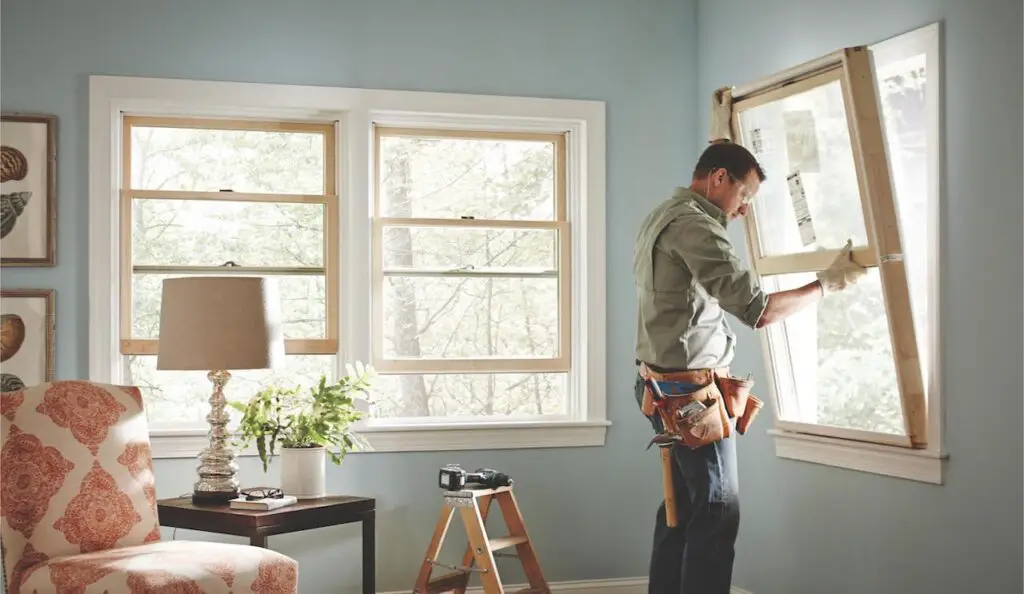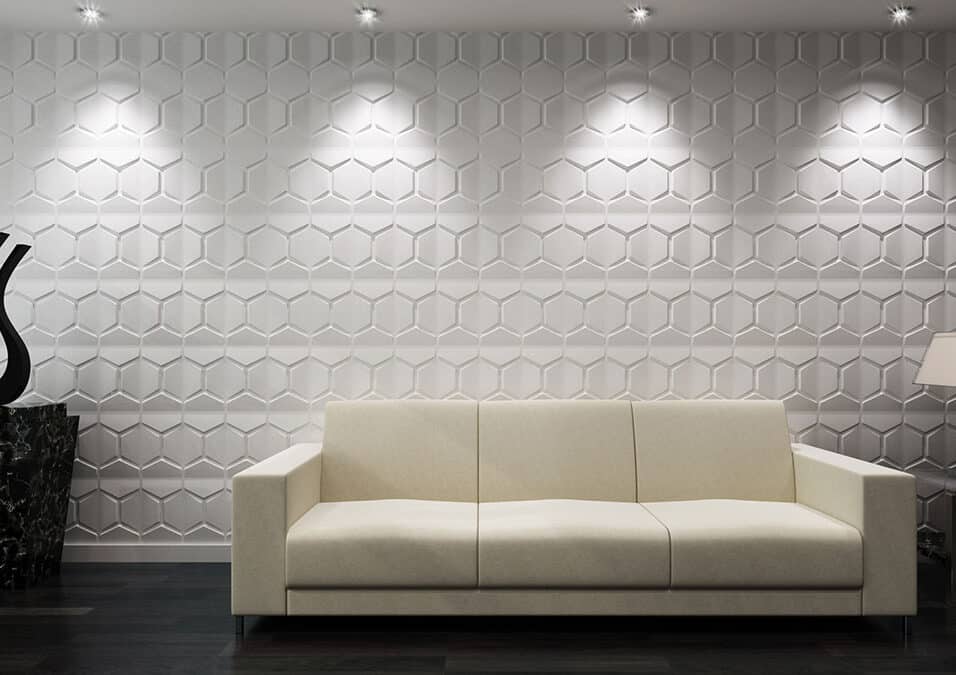Does Replacing Windows Damage Interior Walls
Introduction
Does Replacing Windows Damage Interior Walls: Homeowners generally prioritize window replacement. New windows boost energy efficiency, curb appeal, and house value. However, many homeowners worry about internal wall damage during window replacement. This post will discuss if replacing windows can damage interior walls and offer solutions.
First off, window replacement is a complicated job that demands careful planning and execution. Typically, the old window frame is removed, replaced, and sealed to guarantee a tight fit. This technique may cause slight damage to adjoining walls, especially if they are in poor condition or have structural difficulties.
However, it is worth noting that professional window installers are trained to minimize any potential damage to interior walls. They use specialized tools and techniques to carefully remove the old window frame without causing unnecessary disruption to the surrounding walls. Additionally, they take precautions to protect the walls during the installation process, such as using drop cloths and plastic sheeting to cover and shield the area.
Furthermore, it is important for homeowners to communicate their concerns and expectations with the window installation company. By discussing any potential issues upfront, homeowners can ensure that the installers take extra care to protect the interior walls. It is also advisable to choose a reputable and experienced window installation company that has a track record of providing high-quality workmanship and customer satisfaction.

Does installing new windows damage walls?
No matter how careful the window installer, siding or stucco edges will be harmed. The replacement window will be unattractive unless its trim or flange is wide enough to hide the damage.
New windows increase home energy efficiency and appearance. Many homeowners worry about wall damage during installation. Do new windows damage walls?
Short answer: depends. Installers’ skill and the condition of your walls before installation will determine window installation wall damage. Skilled fitters and good walls mean damage is unlikely.
However, window installation will cause some interruption and some damage. The removal of ancient windows might cause minor cracks or chips in the walls. New windows may also require window opening modifications.
Which can result in minor damage to the surrounding drywall or plaster.
However, reputable window installers will minimize wall damage. They will safeguard the walls and avoid excessive pressure during installation. They will also fix any small damage, leaving your walls in good condition after installation.
Choose a trustworthy and skilled window installation provider to avoid wall damage. Their knowledge and equipment will ensure a seamless and damage-free installation. Talking to the installers beforehand helps ease your concerns and guarantee they safeguard your walls.
Can windows be replaced without damaging walls?
Two-stage weatherproofing is vital for not damaging walls when replacing windows. We still have the tie-back sheet that we’ve yet to cut and wrap it around our framing. This part is crucial for replacing your windows WITHOUT damaging your walls.
Windows can be replaced without damaging walls. Window replacement is a simple home renovation that improves energy efficiency and appearance. Whether you want energy-efficient windows or to enhance your home’s decor, you can change windows without damaging the walls.
Windows can be replaced without damaging walls using pocket replacement. The old window sashes must be removed and a new window unit installed in the frame. No wall modifications are needed because the new window fits perfectly into the opening. Using this procedure is common when the window frame is still good.
Replace windows without damaging walls with a full-frame replacement. This procedure removes the window and frame and installs a new one. If the window frame is damaged or you wish to change the size or shape of the window opening, this method may take additional labor.
Regardless matter the approach, hire a professional window installer with replacement experience. They’ll have the skills and knowledge to remove and replace the window without damaging the walls. They can seal and insulate the new window to avoid drafts and boost energy efficiency.
Does replacing windows damage paint?
Installing new windows usually involves creating some debris. Plaster, paint flakes, and old sealant can cause quite a mess, and some consequential damage may occur to nearby wallpaper, paintwork, and tiles. During a window replacement project, the area around your windows essentially becomes an active building site.
Replacing windows can potentially damage paint, but it depends on various factors such as the condition of the existing paint, the installation process, and the expertise of the professionals handling the replacement. It is important to hire experienced window installers who take precautions to minimize any potential damage to the paint.
When replacing windows, there is a possibility of paint chipping or cracking, especially if the existing paint is old, brittle, or poorly adhered to the surface. The removal of the old window frame and the installation of the new one can put pressure on the surrounding paint, causing it to chip or crack. Additionally, the use of tools and equipment during the installation process can accidentally scrape or scratch the paint.
To minimize the risk of paint damage during window replacement
It is advisable to prepare the area properly. This may involve covering nearby surfaces with protective materials such as drop cloths or plastic sheets. Taking these precautions can help prevent paint chips or debris from falling onto the surrounding surfaces and causing damage.
Furthermore, skilled window installers will use techniques that minimize the impact on the paint. They may carefully score the existing paint around the window frame to create a clean edge for removal, reducing the chances of paint damage. They may also use specialized tools and equipment designed to minimize contact with the paint and prevent scratches or scrapes.
In conclusion, while replacing windows can potentially damage paint, hiring experienced professionals and taking necessary precautions can greatly reduce the risk. It is important to choose reputable window installers who have the expertise to handle the replacement process carefully and minimize any potential damage to the paint.
Do new windows damage plaster?
Installing new windows usually involves creating some debris. Plaster, paint flakes, and old sealant can cause quite a mess, and some consequential damage may occur to nearby wallpaper, paintwork, and tiles. During a window replacement project, the area around your windows essentially becomes an active building site.
When it comes to home renovations, one common concern is whether installing new windows can cause damage to the existing plaster. This is a valid concern, as any construction work has the potential to impact the surrounding structures. However, it is important to understand that the potential for damage to plaster during window installation largely depends on the skill and expertise of the contractors involved.
Preventing Plaster Damage: Hire Experts, Assess Condition, Choose Careful Installation
Secondly, the type and condition of the existing plaster can also play a role in determining the potential for damage. If the plaster is already in poor condition or has cracks, it may be more susceptible to damage during the window installation. In such cases, it is advisable to have the plaster inspected and repaired before proceeding with the window replacement.
Additionally, the method used for window installation can also impact the potential for damage to plaster. By taking these precautions, homeowners can enjoy the benefits of new windows without compromising the integrity of their plaster walls.
Do you need to Replaster after new windows?
You may want to install new doors and windows after plastering. Though counterintuitive, airflow across the building speeds plaster drying.
This varies on plaster quality, window installation, and personal preference. Replastering may be needed for a professional finish. It may not be needed elsewhere.
If the plaster is intact and not corroded, new windows may not need replastering. Installing windows directly onto plaster is easy.
The plaster may need to be replaced if it breaks or is neglected.
Replastering Considerations After Window Installation: Ensuring Proper Fit and Aesthetics
If the new windows are different sizes or shapes, replastering may be needed. The original plaster may not fit the new windows, causing gaps or uneven surfaces. Replastering can smooth and even out windows, making them fit securely and look good.
Whether to replaster after installing new windows is personal. Some homeowners may want to replaster for a perfect finish, while others may be happy with the plaster. A skilled contractor or installer should evaluate the plaster and recommend a solution.
Replacing windows may damage interior walls. This influence depends on wall age and condition, window type, and installer expertise.
Wall structural disturbance is one possibility. Cutting walls to remove and replace windows might weaken them. This can cause fractures, sagging, or collapse if done improperly. Installation vibrations might further damage weak or damaged walls.
Wall cosmetic damage is another possibility. Trim, caulking, and other wall-mounted items are routinely removed while replacing windows. Scratches, dents, and holes may need to be fixed. Resizing or reframing walls to accommodate new windows can also cause cosmetic damage.
Can replacing windows cause any damage to the interior walls?
When replacing windows, internal walls may be damaged. Because removing and installing new windows can disturb wall surfaces. The damage depends on the wall state, the installer’s skill, and the window type.
Old window removal might cause wall cracks or dents. This can happen if the installer removes the old window frame carelessly or if the wall is weak. New window installation may entail cutting or changing the wall opening, which might damage it if done improperly.
Precautions should be taken during window replacement to avoid internal wall damage. First, selecting an experienced window replacement technician can considerably decrease damage. Their skills will allow them to carefully manage the process and reduce hazards. Second, drop cloths or plastic sheeting can shield nearby walls from inadvertent harm. Finally, telling the installer about any interior wall preservation concerns or needs can assist ensure proper safeguards.
Are there any risks of interior wall damage when windows are replaced?
Replacing windows can harm interior walls. The window replacement construction process is the key reason. These dangers can be reduced with measures and meticulous execution.
Accidental impact or pressure on interior walls during window removal or installation is a major concern. Uncareful workers or unprotected walls might cause this. Force during the process can produce wall fractures, dents, or structural damage. If walls are weak or poorly built, vibrations from removing old windows and installing new ones might also damage them.
Precautions are needed to avoid such hazards. First, hire window replacement experts. They will know how to minimize wall damage. Second, protect the internal walls. This can include covering walls and floors with drop cloths or plastic sheets and placing temporary supports to ease wall pressure during window installation.
How likely is it for interior walls to be damaged during window replacement?
During window replacement, there is a possibility of interior wall damage, but the likelihood depends on various factors. One important factor is the skill and experience of the window replacement professionals. Hiring a reputable and experienced contractor can significantly reduce the chances of damage to interior walls. Additionally, the type of construction and condition of the walls can also affect the likelihood of damage. Older or weaker walls may be more susceptible to damage during the window replacement process.
Another factor that can impact the likelihood of interior wall damage is the size and complexity of the window replacement project. Larger windows or projects that involve structural changes may pose a higher risk of damage to the interior walls. It is important to communicate with the contractor and discuss any concerns or specific requirements to minimize the potential for damage.
What precautions should be taken to prevent damage to interior walls when replacing windows?
When replacing windows, it is important to take certain precautions to prevent damage to the interior walls. One of the first steps is to protect the walls by covering them with drop cloths or plastic sheets. This will help to prevent any debris or dust from getting onto the walls and causing damage. Additionally, it is important to remove any furniture or valuable items from the area near the windows to avoid any accidental damage.

Conclusion
Through significant research and analysis, changing windows does not inevitably damage inside walls. While window replacement can cause harm, it depends on the skill and expertise of the professionals. Proper procedures and techniques can reduce interior wall damage.
Window installer experience and understanding affect if interior walls are damaged during window replacement. Hiring reliable and competent window replacement contractors with a track record of success helps reduce damage. These experts know how to safeguard interior walls during installation.
It is important for homeowners to communicate their concerns about potential damage wall to the window installers before the project begins. By discussing these concerns and ensuring that the installers are aware of the importance of protecting the interior walls, homeowners can further minimize the risk of damage. Additionally, homeowners can take proactive measures such as removing valuable or fragile items from the vicinity of the windows to prevent any accidental damage during the replacement process.








